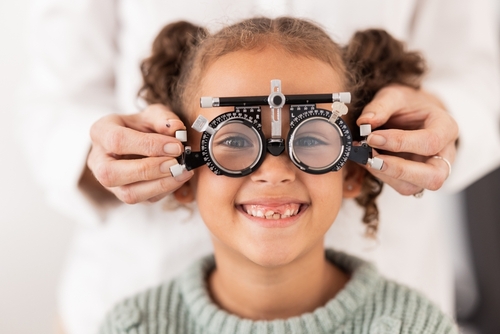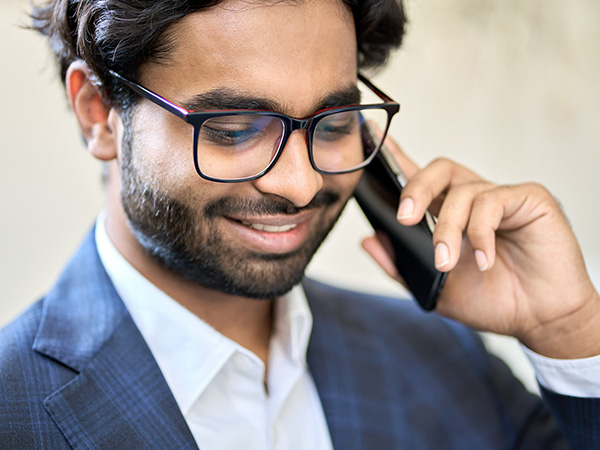
Healthy vision plays a major role in how children learn, play, and grow. Yet many parents are surprised to learn that 1 in 4 school-aged children have an undiagnosed vision problem. Since kids don’t always know how to describe what they’re seeing, regular eye exams are the best way to catch issues early and keep their development on track.
Here’s why eye exams are so important for kids, plus what parents can expect at every stage of childhood.
Why Kids Need Regular Eye Exams
Children rely heavily on their vision for learning. Up to 80% of what they learn in school is visual, so even small vision problems can lead to reading struggles, headaches, poor attention, or difficulty with sports.
Eye exams do more than check how clearly children see, they help detect early signs of:
- Amblyopia (lazy eye from eye misalignment or refractive error)
- Refractive Error (nearsighted, farsighted, astigmatism)
- Binocular issues, focusing or eye-teaming issues
- Eye health conditions that may not cause symptoms
Early detection means early treatment, and better long-term outcomes.
Eye Exams by Age: What to Expect
Infants: 6–12 Months
Even newborns can have vision issues, which is why the first exam typically occurs around 6 months.
During this exam, your optometrist will:
- Check for proper eye alignment
- Ensure the eyes track objects
- Look for early signs of eye disease
- Assess visual development
No reading charts are needed, optometrists use lights, toys, and specialized tools designed for babies.
Toddlers: 1–3 Years
As kids become more active, their visual demands increase. At this stage, exams evaluate:
- Depth perception
- Eye coordination
- Early refractive errors
- Healthy eye growth
Most toddlers enjoy the exam, especially with picture charts and interactive tools.
Preschoolers: 3–5 Years
Before children learn to read, it’s crucial to ensure their vision can support early learning. Exams for preschoolers often include:
- Visual acuity (using shapes or matching games)
- Color vision
- Eye tracking and focusing skills
- Screening for amblyopia and strabismus
If any issues are found early, treatment is typically easier and more successful.
School-Age Children: 6–18 Years
As school and screen time increase, so do vision demands, especially with the rising rates of childhood myopia.
Annual exams check for:
- Changes in distance vision
- Digital eye strain
- Reading difficulties or trouble focusing
- Progression of myopia
- Eye health related to sports or screen use
For children involved in sports, your optometrist may also recommend eye protection or sports-specific eyewear.
Signs Your Child Might Be Struggling With Vision
Even between annual exams, watch for:
- Squinting or sitting very close to screens
- Frequent eye rubbing
- Headaches
- Avoiding reading
- Poor hand-eye coordination
- Complaints of blurry vision
If you notice any of these signs, schedule an eye exam sooner.
Give Your Child a Strong Start
Vision affects every part of a child’s life, from learning and confidence to coordination and comfort. Regular eye exams ensure your child is seeing clearly and set up for success at every stage.
👉 Schedule your child’s comprehensive eye exam at Paramount Eye Care & Eyewear. We make the experience fun, stress-free, and tailored to kids of all ages.








